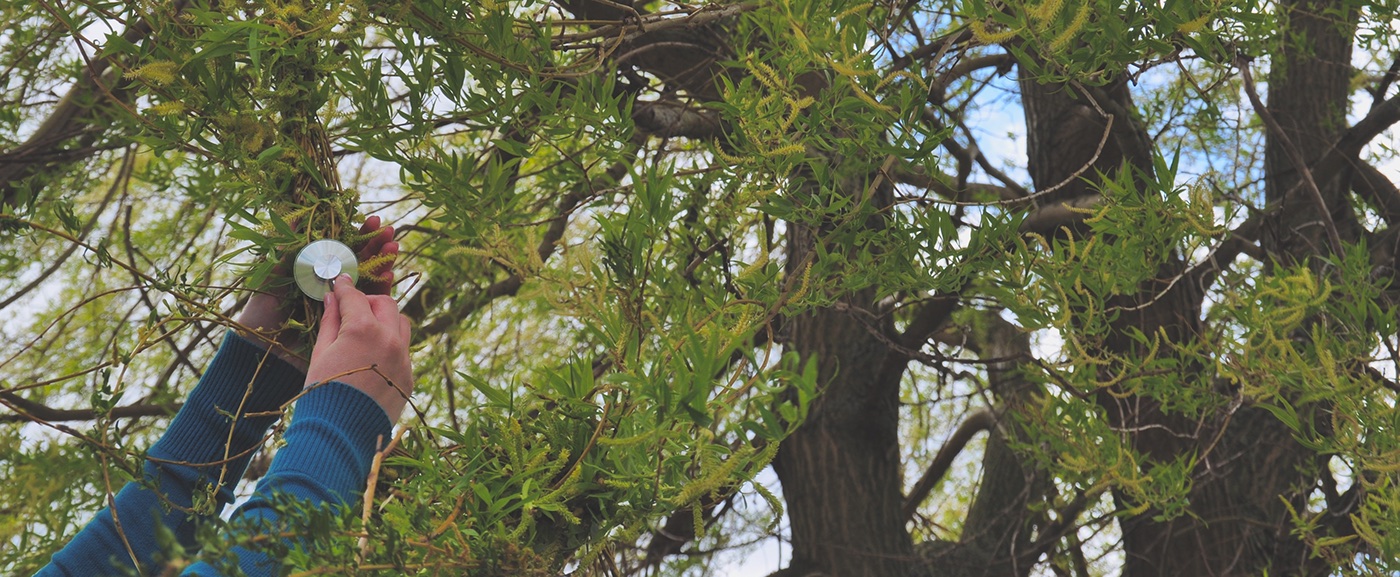
“How is it possible for us to encounter plants? And how can we maintain and nurture, without fetishizing it, their otherness in the course of this encounter?”
(Michael Marder, Plant Thinking: p. 3)
One of the main obstacles when encountering plants is the risk to subliminally objectify them, since they may seem passive or even lifeless. The Plantoscope is a device for the observation of plant activity and the plant’s life – may it be a houseplant or a random plant outside, in a forest or a park. It looks and works similar to a stethoscope, a device usually used to observe an animal’s heartbeat.

Since plants don’t have hearts and therefore no heartbeats to listen to, the front piece of the Plantoscope is turned into an electrode, which can be switched, depending on the user’s needs. The standard flat electrode is designed for the observation of electric properties found in any smooth and even part of a plant, like big leaves or green stems. The needle electrode allows observing a tree with rough bark or a plant’s roots in the ground. The third electrode, a strap, can be used to measure small electrical signals like action potentials sent by the plant* and fits around the small stems of leaves or small plants.
The electrodes are connected to a circuit located in a small pouch beneath the earpiece. There the data is collected, filtered and sonified, leading to specific sounds audible through the Plantoscope’s earpiece.

Listening to the plant’s life offers a new kind of interaction between human and plant and shall lead to a better understanding and greater respect while encountering plants as independent beings.
* not implemented yet
This object is part of the Planterious project developed as a Master Project in the Digital Media Master at HfK Bremen.
(Project by Annika Engelhardt; Actors in the videos: Maria Eugênia Araujo & Marianna Nikulshina.)




